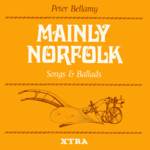> Steeleye Span > Records > Sails of Silver
Steeleye Span: Sails of Silver
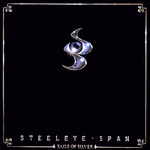 |
Sails of Silver Chrysalis CHR 1304 (LP, UK, 1980) |
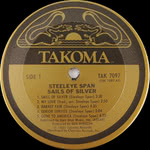 |
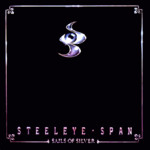 |
Produced by Gus Dudgeon; |
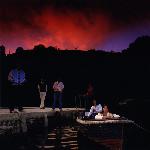 |
Musicians
Maddy Prior: vocals;
Tim Hart: vocals, guitar [1-10];
Bob Johnson: vocals, guitar;
Rick Kemp: vocals, bass [1-10];
Peter Knight: vocals, keyboards, violin;
Nigel Pegrum: drums, percussion, woodwind [1-10];
Gay Woods: vocals [11-13];
Tim Harries: bass, vocals, keyboards [11-13];
Liam Genockey: drums [11-13]
Tracks
Side 1
- Sails of Silver (3.27)
- My Love (2.53)
- Barnet Fair (4.34)
- Senior Service (3.31)
- Gone to America (4.21)
Side 2
- Where Are They Now (4.11)
- Let Her Go Down (3.36)
- Longbone (3.58)
- Marigold / Harvest Home (Roud B259335) (3.05)
- Tell Me Why (3.56)
Nearly every issue of this album has the credits:
All songs written by Steeleye Span except
Tracks 2, 9b trad. arr. Steeleye Span
The 1998 BGO reissue gives more detailed credits:
Track 1 Tim Hart;
Track 2 trad. arr. Tim Hart;
Tracks 3, 6 Rick Kemp;
Track 4 Maddy Prior, Rick Kemp;
Tracks 5, 7 Peter Knight;
Track 8 trad. arr. Bob Johnson;
Track 9a Peter Knight;
Track 9b trad. [Henry Alford, George Job Elvey, 1844/1858] arr. Peter Knight;
Track 10 trad. arr. Steeleye Span
CD Bonus Tracks
- Thomas the Rhymer
(Roud 219; Child 37)
(6.50)
recorded live in March 1997 - My Johnny Was a Shoemaker (Roud 1388; G/D 8:1848) (1.39)
- The Lark in the Morning
(Roud 151)
(4.03)
both recorded live in December 1996 when Steeleye was supporting Status Quo on a British tour
Sleeve Notes
There was a certain inevitability about the 1980 reformation of Steeleye Span—after all they’d parted on a critical high two years earlier, yet failed to crack any significant barriers individually. The sum of parts, it appeared, was less than the whole. They admit as much.
Maddy Prior: “There has to be a combination of certain personalities for Steeleye to function and when we got back together everything just fell into place.”
Of course, the Span which came back wasn’t the Span that went, rather the most commercially successful and long lived version. This bunch hadn’t spoken to one another to any great extent since a third of them waltzed off to promote The King of Elfland’s Daughter project. So there were problems. What lay behind this Lazarus-like behaviour was the fact that Warwick—a TV advert label responsible for such wonders as ‘Bernard Manning sings’ and ‘Twenty Golden Organ Greats’—wanted to license a Steeleye compilation from Chrysalis. The spin off from a venture like that would be considerable and Chrysalis wanted something new in the racks to go alongside. Thus the band were approached firstly through Maddy Prior and husband Rick Kemp. Gradually matters coalesced—before you knew it, whispers were flying around the folk and rock press about recording.
Rick: “The band would have liked Mike Batt (producer of All Around My Hat) to have done Sails of Silver but he was in Japan or somewhere, so we agreed on Elton John and Joan Armatrading producer Gus Dudgeon. He came to our first rehearsal and told us that, in his estimation, we had one and a half songs. On reflection, we agreed with him, so off we went to write some more.”
The idea behind Sails of Silver was that, whilst obviously a Steeleye album, it was to be a new beginning.
Maddy: “No, we weren’t fed up with doing folk songs, but we’d all been writing and wanted to adapt our styles to make Steeleye music something fresh. What we came up with reflected traditional themes, yet sounded contemporary.”
Rick: “I remember sitting up all night finishing Where Are They Now and recording it straight away the next morning.”
The sessions for the album took place in the intimate and remote setting of Sawmills Studio, Cornwall—a spot you can only reach at high tide, in a boat, when the river waters rise.
Span reworked such folk concerns as betrayal, transportation, village revels, sinkings on the high seas, the rakish life of sailors and as Bob Johnson so deftly puts it, “Before, when we were young and carefree, we did songs about elves, witches and goblins. Now we’re older, more mature, we’re writing about giants.”
Touring the album at Christmas, most of the new songs stood well amongst a set of audience favourites and hits. Span openly talked about moving rockwards, extending away from their roots. Peter Knight played keyboard far more than fiddle. Less of a tour, more of a triumphal procession of return.
All this means, it’s a pity there was no swift follow up to Sails of Silver, furthering the experiment. Instead, though they toured, Steeleye added no new recording for six long years. By then the momentum had faded, personnel changed and they had no reassess direction.
Yet this is a fine album and a remarkably bold statement of intent. Sails of Silver endures.
Simon Jones, Folk Roots

